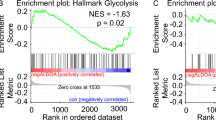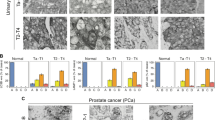Abstract
The human genetic disorder ataxia-telangiectasia (A-T) is due to lack of functional ATM, a protein kinase which is involved in cellular responses to DNA double strand breaks (DSBs) and possibly other oxidative stresses, as well as in regulation of several fundamental cellular functions. Studies regarding responses in A-T cells to the induction of DSBs utilize ionizing radiation or radiomimetic chemicals, such as neocarzinostatin (NCS), which induce DNA DSBs. This critical DNA lesion activates many defense systems, such as the cell cycle checkpoints. The cell cycle is also regulated through a timed and coordinated degradation of regulatory proteins via the ubiquitin pathway. Our recent studies indicate that the ubiquitin pathway is influenced by the cellular redox status and that it is the major cellular pathway for removal of oxidized proteins. Accordingly, we hypothesized that the absence of a functional ATM protein might involve perturbations to the ubiquitin pathway as well. We show here that upon treatment with NCS, there was a transient 50–70% increase in endogenous ubiquitin conjugates in A-T and wt lymphoblastoid cells. Ubiquitin conjugation capabilities per se and levels of substrates for conjugation were also similarly enhanced in wt and A-T cells upon NCS treatment. We also compared the ubiquitination response in A-T and wt cells using H2O2 as the stress, in view of preexisting evidence of the effects of H2O2 on ubiquitination capabilities in other types of cells. As with NCS treatment, there was an ≈45% increase in endogenous ubiquitin conjugates by 2–4 h after exposure to H2O2. Both cell types showed a rapid 50–150% increase in de novo formed125I-ubiquitin conjugates. As compared with wt cells, unexposed A-T cells had higher endogenous levels of conjugates and enhanced conjugation capability. However, A-T cells mounted a more muted ubiquitination response to the stress. The enhanced ubiquitin conjugation in unstressed A-T cells and attenuated ability of these cells to respond to stress are consistent with the A-T cells being under oxidative stress and with their having an ‘aged’ phenotype. The indication that ubiquitin conjugate levels and ubiquitin conjugation capabilities are enhanced upon oxidative stress without significant changes in GSSG/GSH ratios indicates that assays of ubiquitination provide a sensitive measure of cellular stress. The data also add support to the impression that potentiated ubiquitination response to mild oxidative stress is a generalizable phenomenon.
This is a preview of subscription content, access via your institution
Access options
Subscribe to this journal
Receive 50 print issues and online access
$259.00 per year
only $5.18 per issue
Buy this article
- Purchase on Springer Link
- Instant access to full article PDF
Prices may be subject to local taxes which are calculated during checkout






Similar content being viewed by others
References
Adamo AM, Pasquini LA, Moreno MB, Oteiza PI, Soto EF, Pasquini JM . 1999 J. Neurosci. Res. 55: 523–531
Andegeko Y, Moyal L, Mittelman L, Tsarfaty I, Shiloh Y, Rotman G . 2001 J. Biol. Chem. 276: 38224–38230
Applegate LA, Frenk E, Gibbs N, Johnson B, Ferguson J, Tyrrell RM . 1994 J. Invest. Dermatol. 102: 762–767
Barlow C, Dennery PA, Shigenaga MK, Smith MA, Morrow JD, Roberts II LJ, Wynshaw-Boris A, Levine RL . 1999 Proc. Natl. Acad. Sci. USA 96: 9915–9919
Bence NF, Sampat RM, Kopito RR . 2001 Science 292: 1552–1555
Ciechanover A . 1994 Cell 79: 13–21
Ciechanover A, Wolin SL, Steitz JA, Lodish HF . 1985 Proc. Natl. Acad. Sci. USA 82: 1341–1345
Cuervo AM, Dice JF . 2000 J. Biol. Chem. 275: 31505–31513
Edo K, Saito K, Matsuda Y, Akiyama-Murai Y, Mizugaki M, Koide Y, Ishida N . 1991 Chem. Pharm. Bull. (Tokyo) 39: 170–176
Eisenhauer DA, Berger JJ, Peltier CZ, Taylor A . 1988 Exp. Eye Res. 46: 579–590
Gatei M, Shkedy D, Khanna KK, Uziel T, Shiloh Y, Pandita TK, Lavin MF, Rotman G . 2001 Oncogene 20: 289–294
Giasson BI, Duda JE, Murray IV, Chen Q, Souza JM, Hurtig HI, Ischiropoulos H, Trojanowski JQ, Lee VM . 2000 Science 290: 985–989
Haas AL . 1997 FASEB J. 11: 1053
Haas AL, Siepmann TJ . 1997a FASEB J. 11: 1053–1054
Haas AL, Siepmann TJ . 1997b FASEB J. 11: 1257–1268
Hauser HP, Bardroff M, Pyrowolakis G, Jentsch S . 1998 J. Cell Biol. 141: 1415–1422
Hershko A, Ciechanover A . 1998 Annu. Rev. Biochem. 67: 425–479
Hershko A, Heller H, Eytan E, Reiss Y . 1986 J. Biol. Chem. 261: 11992–11999
Hochstrasser M . 1996 Annu. Rev. Genet. 30: 405–439
Huang LL, Shang F, Nowell Jr TR, Taylor A . 1995 Exp. Eye Res. 61: 45–54
Jabben M, Shanklin J, Vierstra RD . 1989 Plant Physiol. 90: 380–384
Jahngen JH, Haas AL, Ciechanover A, Blondin J, Eisenhauer D, Taylor A . 1986 J. Biol. Chem. 261: 13760–13767
Jahngen-Hodge J, Cyr D, Laxman E, Taylor A . 1992 Exp. Eye Res. 55: 897–902
Jahngen-Hodge J, Obin M, Gong X, Shang F, Nowell T, Gong J, Abasi H, Blumberg J, Taylor A . 1997 J. Biol. Chem. 272: 28218–28226
Jentsch S . 1992 Annu. Rev. Genet. 26: 179–207
Jentsch S, Schlenker S . 1995 Cell 82: 881–884
Johnston JA, Ward CL, Kopito RR . 1998 J. Cell Biol. 143: 1883–1898
Kamsler A, Daily D, Hochman A, Stern N, Shiloh Y, Rotman G, Barzilai A . 2001 Cancer Res. 61: 1849–1854
King RW, Deshaies RJ, Peters J-M, Kirschner MW . 1996 Science 274: 1652–1658
Kornitzer D, Ciechanover A . 2000 J. Cell. Physiol. 182: 1–11
Lenton KJ, Therriault H, Cantin AM, Fulop T, Payette H, Wagner JR . 2000 Am. J. Clin. Nutr. 71: 1194–1200
Masliah E, Rockenstein E, Veinbergs I, Mallory M, Hashimoto M, Takeda A, Sagara Y, Sisk A, Mucke L . 2000 Science 287: 1265–1269
Mayer RJ, Lowe J, Landon M . 1991 J. Pathol. 163: 279–281
Muller-Taubenberger A, Hagmann J, Noegel A, Gerisch G . 1988 J. Cell Sci. 90: 51–58
Obin M, Shang F, Gong X, Handelman G, Blumberg J, Taylor A . 1998 FASEB J. 12: 561–569
Obin M, Mesco E, Gong X, Haas A, Joseph J, Taylor A . 1999 J. Biol. Chem. 274: 11789–11795
Okada S . 2000 J. Gastroenterol. 35: 407–409
Ramanathan M, Hassanain M, Levitt M, Seth A, Tolman JS, Fried VA, Ingoglia NA . 1999 Neuroreport 10: 3797–3802
Rotman G, Shiloh Y . 1997 Cancer Surveys 29: 285–304
Rotman G, Shiloh Y . 1999 Oncogene 18: 6135–6144
Rybczynska M, Pawlak AL, Sikorska E, Ignatowicz R . 1996 Biochim. Biophys. Acta. 1302: 231–235
Scheffner M, Nuber U, Huibregtse JM . 1995 Nature 373: 81–83
Schor NF, Tyurina YY, Fabisiak JP, Tyurin VA, Lazo JS, Kagan VE . 1999 Brain Res. 831: 125–130
Shackelford RE, Innes CL, Sieber SO, Heinloth AN, Leadon SA, Paules RS . 2001 J. Biol. Chem. 276: 21951–21959
Shang F, Gong X, Palmer HJ, Nowell Jr TR, Taylor A . 1997a Exp. Eye Res. 64: 21–30
Shang F, Gong X, Taylor A . 1997b J. Biol. Chem. 272: 23086–23093
Shang F, Nowell Jr TR, Taylor A . 2001 Exp. Eye Res. 73: 229–238
Shang F, Taylor A . 1995 Biochem. J. 307: 297–303
Shiloh Y, Becker Y . 1982 Biochim. Biophys. Acta. 721: 485–488
Shiloh Y, Kastan X . 2001 Adv. Cancer Res. 83: 209–254
Smith D, Shang F, Nowell TR, Asmundsson G, Perrone G, Dallal G, Scott L, Kelliher M, Gindelsky B, Taylor A . 1999 J. Nutr. 129: 1229–1232
Stadtman ER . 1992 Science 257: 1220–1224
Stephen AG, Trausch-Azar JS, Ciechanover A, Schwartz AL . 1996 J. Biol. Chem. 271: 15608–15614
Takao N, Li Y, Yamamoto K . 2000 FEBS Lett. 472: 133–136
Tanaka T, Nakamura H, Nishiyama A, Hosoi F, Masutani H, Wada H, Yodoi J . 2000 Free Radic. Res. 33: 851–855
Taylor A . 1999 Nutritional and Environmental Influences on the Eye. Taylor A (ed) Boca Raton, FL: CRC Press pp 53–93
Taylor A, Berger J, Reddan J, Zuliani A . 1991 In Vitro Cell. Develop. Biol. 27A: 287–292
Taylor A, Davies KJA . 1987 Free Radic. Biol. Med. 3: 371–377
Taylor A, Lipman RD, Jahngen-Hodge J, Palmer V, Smith D, Padhye N, Dallal GE, Cyr DE, Laxman E, Shepard D, Morrow F, Salomon R, Perrone G, Asmundsson M, Blumberg T, Mune M, Harrison DE, Archer JR, Shigenaga M . 1995 Mech. Ageing Dev. 79: 33–57
Varshavsky A . 1997 TIBS 22: 383–387
Watters D, Kedar P, Spring K, Bjorkman J, Chen P, Gatei M, Birrell G, Garrone B, Srinivasa P, Crane DI, Lavin MF . 1999 J. Biol. Chem. 274: 34277–34282
Acknowledgements
We thank Dr Luciana Chessa for A-T cell lines. This work was supported by NIH EY013250, USDA contract 5000-052, and Fulbright Foundation CIES (to A Taylor), and research grants from The A-T Medical Research Foundation and the A-T Children's Project (to Y Shiloh). Y Galanty is a Thomas Appeal Fellow.
Author information
Authors and Affiliations
Corresponding author
Rights and permissions
About this article
Cite this article
Taylor, A., Shang, F., Nowell, T. et al. Ubiquitination capabilities in response to neocarzinostatin and H2O2 stress in cell lines from patients with ataxia-telangiectasia. Oncogene 21, 4363–4373 (2002). https://doi.org/10.1038/sj.onc.1205557
Received:
Revised:
Accepted:
Published:
Issue Date:
DOI: https://doi.org/10.1038/sj.onc.1205557



